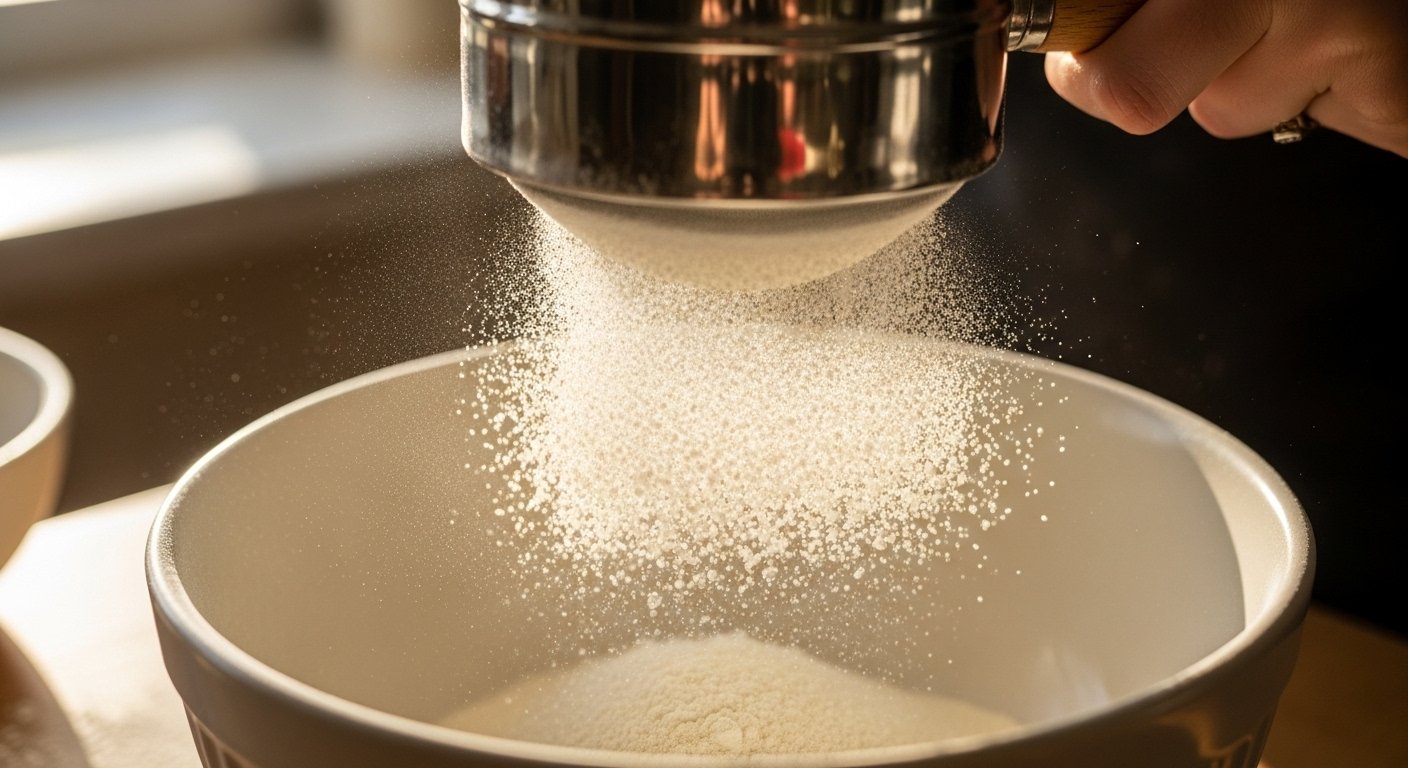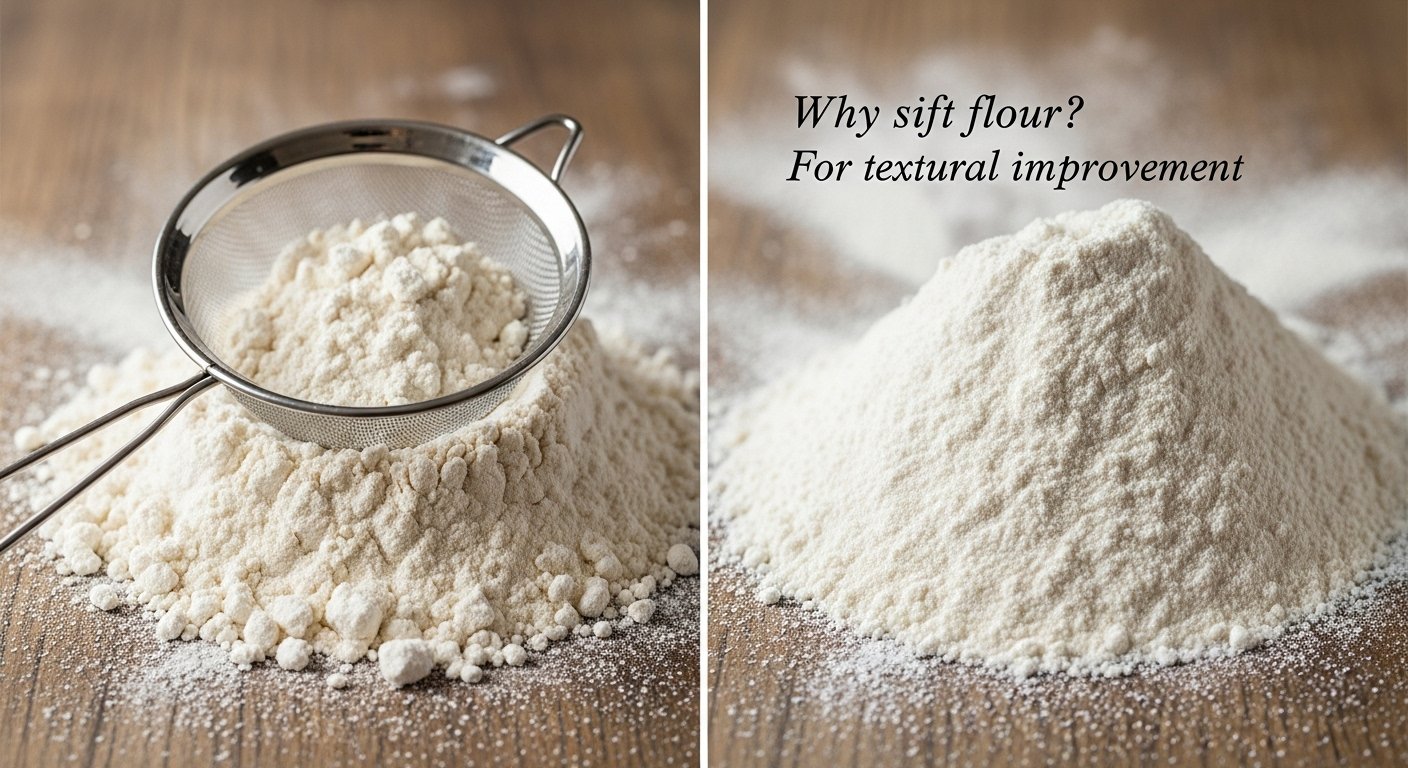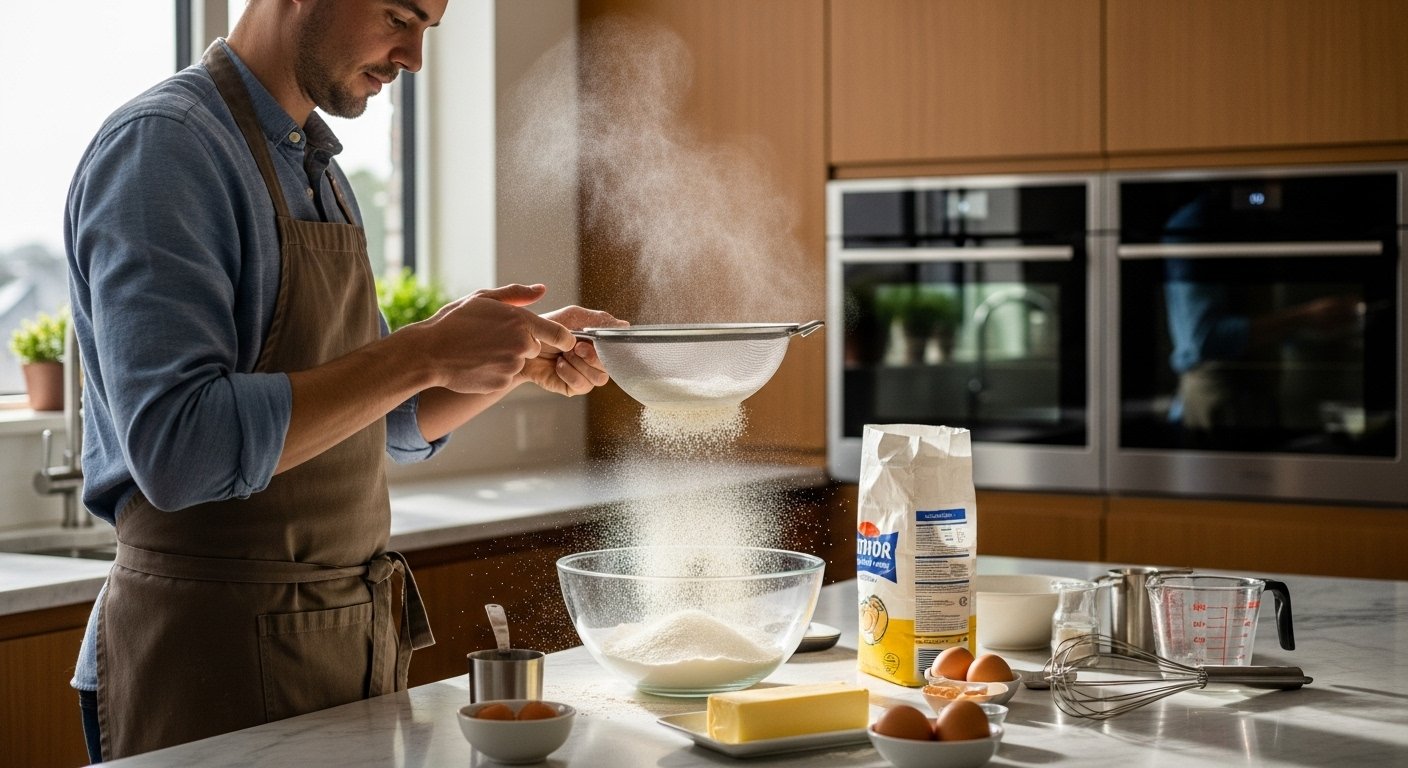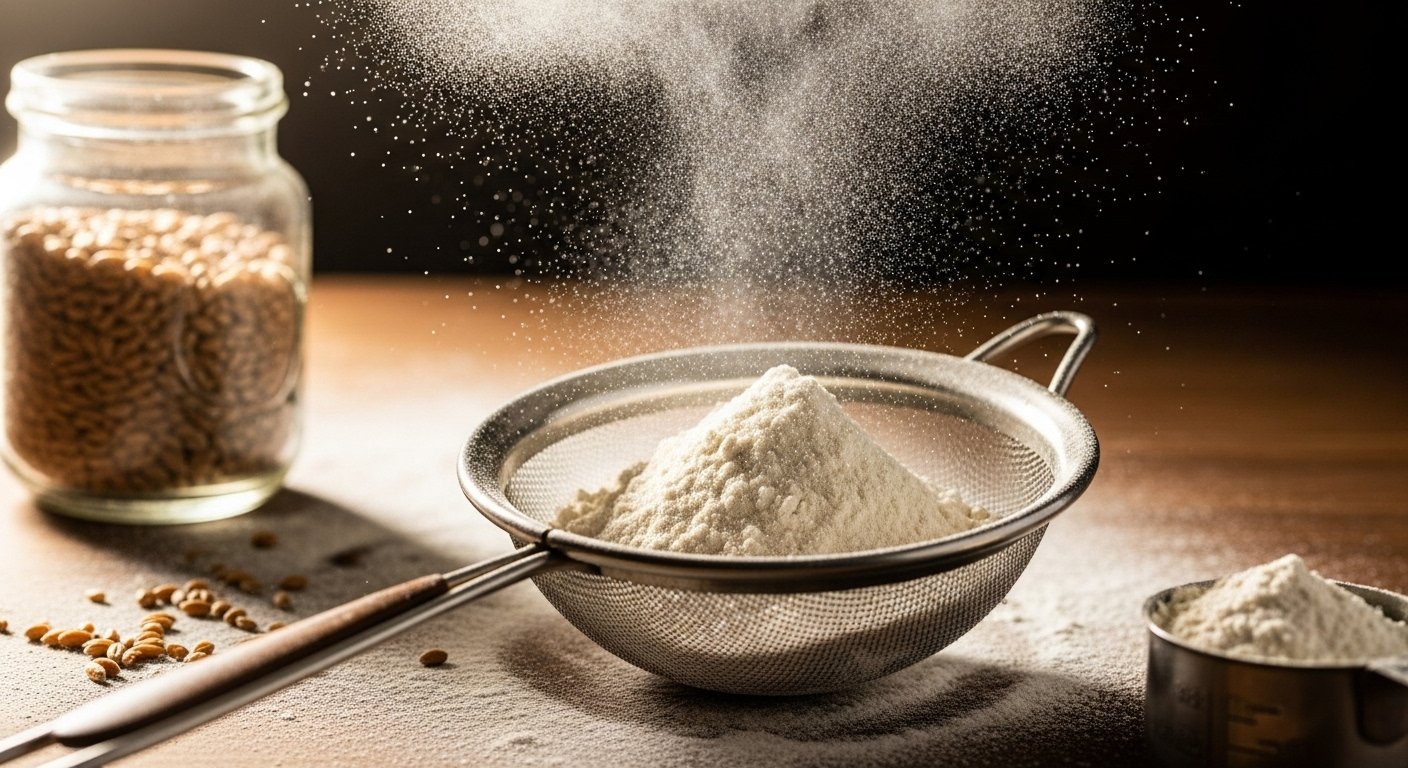Baking, at its heart, is a precise science, and every step, no matter how seemingly small, plays a role in the final outcome. Among the most debated and sometimes overlooked steps is the act of sifting flour. Many home bakers wonder: why sift flour? While modern flours are highly refined, the practice of sifting remains relevant for several scientific reasons that profoundly impact the texture, consistency, and overall success of your baked goods. Understanding the purpose of sifting flour can transform your baking from good to truly exceptional, particularly when aiming for a light and airy result.

Recipes often call for sifting flour before measuring it to achieve a specific, consistent volume and to introduce air, which is crucial for certain baked goods. Sifting helps break up any compaction that occurs during storage, ensures an accurate measurement of the flour, and evenly distributes other dry ingredients. This seemingly simple action directly contributes to a lighter, more delicate crumb and a smoother batter, preventing dense spots in your final product. [2, 6]
The Core Reasons Why Sift Flour
Sifting flour isn’t just an old-fashioned tradition; it’s a technique rooted in fundamental baking science. It addresses several common issues bakers face, from inconsistent measurements to uneven texture.
Aeration: Breathing Life into Your Bakes
One of the primary benefits of sifting flour is aeration. As flour sits in its packaging, it can become compacted and dense. When you sift flour, you essentially force air between the individual particles. This process makes the flour lighter and fluffier. Sifting flour incorporates air into its particles, which helps to aerate baked goods and create a lighter, more delicate crumb and texture. [2, 11] This added air then contributes to the leavening process, especially when combined with chemical leavening agents like baking powder or baking soda. The science of sifting flour shows that this initial aeration makes the flour easier to incorporate into batters, particularly those with delicate structures like whipped egg whites (common in recipes for angel food or sponge cakes). [4] This reduced mixing minimizes gluten development, which is often desirable for a tender and airy result. [4]
Eliminating Lumps and Ensuring Smoothness
Another crucial role of sifting is to remove lumps from flour. Even modern, finely milled flours can develop small clumps due to moisture absorption or static electricity. These lumps, if not broken up, can lead to uneven mixing, resulting in pockets of dry flour in your batter or dough, which can then turn into dense, unappetizing spots in the finished product. Sifting breaks up clumps in flour and ensures a smoother batter or dough, leading to more even baking and preventing dense spots in the final product. [2, 12]

Achieving Accurate Measurement
The way flour is measured significantly impacts the final product, and sifting plays a critical role in accurate measurement. When flour is scooped directly from a bag, it can be highly compacted, leading to an excess amount of flour by weight for a given volume. This is the difference between sifted vs unsifted flour in terms of density. A cup of flour sifted before measuring will weigh 20 to 30 percent less than a cup of flour sifted after measuring, a difference that can significantly impact the texture of finished baked goods. [6] This data highlights why aerate flour is important for volume-based recipes. For consistent results, especially in older recipes that often assumed flour would be sifted, it’s vital to follow the recipe’s instruction for “cups sifted flour” (sift first, then measure) versus “cups flour, sifted” (measure first, then sift). [6, 7]
Even Distribution of Dry Ingredients
The purpose of sifting flour in baking extends beyond just the flour itself. Many recipes call for combining flour with other dry ingredients such as leavening agents (like baking powder and baking soda), salt, cocoa powder, or spices. When other dry ingredients like baking powder, baking soda, cocoa powder, or spices are combined with flour, sifting helps distribute them evenly, ensuring consistent flavor and texture throughout the baked product. [2] This even mixing prevents bites that are too salty, overly leavened, or lacking flavor in certain areas.
Do You Really Need to Sift Flour Today?
This is a common question, as modern milling processes have greatly improved the quality and consistency of flour types. While sifting isn’t always strictly necessary for every recipe, there are definitive situations where it truly matters and others where you can often skip it. [4, 8]
When Sifting is Essential
Sifting is particularly crucial for recipes that demand a delicate, airy texture. This includes cakes like angel food cake, sponge cakes, or chiffons, where a light crumb is paramount. 3] In these instances, the effect of sifting flour on texture is profound; the added aeration helps create the desired delicate structure and significantly reduces the chance of a dense product. Sifted flour is easier to incorporate into batters, particularly those with whipped egg whites (like angel food or sponge cakes), requiring less mixing. This reduced mixing minimizes gluten development, contributing to a more tender and airy result. [4] For these recipes, skipping the sift can lead to a noticeably heavier, coarser cake. Many old recipes were developed when flour was less refined and more prone to lumps and debris, making sifting a non-negotiable step. [4, 7] Even with modern flour, if your recipe aims for that classic, fine crumb, sifting for sifting flour for cake batter is key. To master light and airy cakes, understanding the foundational techniques is key, just as mastering dough for [authentic Neapolitan pizza dough requires specific methods.
When You Can Often Skip It
For many everyday baking projects, especially those using modern flour that is already finely ground and consistent, you can often skip the sifting step. 4] This includes recipes for cookies, brownies, muffins, or quick breads where a slightly denser, chewier, or more robust texture is desired, or where extensive mixing is already part of the process. For example, when sifting flour for cookies or sturdy bread doughs (like those for [authentic Italian pasta), the extra aeration might not be critical, and a quick whisk with a fork can often suffice to break up minor clumps. [3] If a recipe doesn’t explicitly call for sifting, or specifies measuring then sifting (e.g., “1 cup flour, sifted”), you might find that simply whisking the dry ingredients together achieves satisfactory results, especially if you’re using a kitchen scale for accurate measurement by weight, which negates the density issue entirely. [7, 9]

How to Sift Flour
If your recipe dictates sifting, the process is straightforward. A specialized sifter, often a cup with a crank mechanism, is the most common tool. However, a fine-mesh strainer (sieve) or a whisk can also serve as effective sifter alternatives. [4]
Method 1: Using a Sifter or Fine-Mesh Strainer
1. Place the sifter or strainer over a bowl, a piece of parchment paper, or directly onto your work surface.
2. Add the desired amount of flour (and other dry ingredients if the recipe calls for sifting them together) into the sifter/strainer.
3. Gently tap the side of the sifter or shake it, allowing the flour to pass through the mesh. For a sifter with a crank, turn the handle until all the flour has gone through.
4. Once sifted, proceed with measuring or mixing as per your recipe.
Method 2: Using a Whisk
If you don’t have a sifter, a balloon whisk can aerate flour and break up clumps. Simply place the flour in a large bowl and whisk it vigorously for 30 seconds to a minute until it appears light and fluffy. While not as fine as a sifter, this method effectively addresses aeration and lump removal for many applications. [4, 5]
Remember to clarify whether the recipe calls for “X cups sifted flour” (sift first, then measure) or “X cups flour, sifted” (measure first, then sift) to ensure correct quantities. 6] This distinction, especially important in volume measurements, can be the difference between a perfect bake and a batch of [dry cakes.
The Science Behind the Sift
From a scientific perspective, sifting isn’t just about fluffing; it’s about altering the physical properties of the flour to optimize it for baking. When you sift, you’re not just adding air; you’re also breaking up the internal structure of compacted flour. This ensures that when the flour is introduced to liquid ingredients, it hydrates more evenly and quickly. The uniform particle size and distribution allow for consistent gluten development once liquid is added and mixing begins. Uneven hydration or clumps can lead to overmixing in an attempt to combine everything, which can then result in tough baked goods due to excessive gluten formation. [11] Furthermore, the aeration created by sifting enhances the function of leavening agents. Air trapped in the sifted flour acts as a physical leavener, expanding during baking alongside gases released by chemical leaveners or yeast, contributing to a greater rise and a lighter, more tender crumb. [15] For a deeper dive into flour properties and milling, you can explore academic research on the subject. [10]
Key Takeaways
- Sifting flour primarily serves to aerate it, remove lumps, ensure accurate measurement, and evenly distribute dry ingredients.
- Aeration contributes to a lighter, more delicate crumb and texture in baked goods.
- Accurate measurement is vital; a cup of sifted flour weighs less than unsifted, significantly impacting results.
- Sifting is essential for delicate cakes (like angel food) and recipes prioritizing a fine, airy texture.
- For many everyday bakes, a thorough whisking can often substitute for sifting, especially with modern flours.
- Always check whether a recipe asks for “X cups sifted flour” or “X cups flour, sifted” to measure correctly.
Frequently Asked Questions (FAQ)
Frequently Asked Questions
What is the main purpose of sifting flour in a recipe?
The main purpose of sifting flour is to aerate it, break up any lumps, ensure a more accurate and consistent measurement, and evenly distribute other dry ingredients like leavening agents or spices. This process contributes to a lighter, more delicate texture in the final baked good. [2, 11]
Do I really need to sift flour for baking today?
While not always strictly necessary for all recipes with modern, well-refined flours, sifting remains crucial for baked goods where a light, airy, and delicate texture is desired, such as angel food cakes or chiffon cakes. For denser items like cookies or quick breads, a good whisking may suffice. [3, 4]
What does sifting do to flour?
Sifting incorporates air into the flour particles, making it lighter and less dense. It also physically separates any compacted clumps, creating a uniform, fine powder. This changes the flour’s volume, making it important for accurate measurement, and helps other dry ingredients blend smoothly. [2, 11]
When can you skip sifting flour?
You can often skip sifting flour when baking items where a dense or chewy texture is acceptable or desired, such as certain cookies, brownies, or rustic breads. Additionally, if you measure your flour by weight using a kitchen scale, the primary benefit of accurate volume measurement through sifting becomes less critical. [3, 7]
Is there a difference between “1 cup flour, sifted” and “1 cup sifted flour”?
Yes, there’s a significant difference. “1 cup flour, sifted” means you measure one cup of flour first, then sift that measured amount. “1 cup sifted flour” means you sift a larger quantity of flour first, then gently spoon one cup of the now-sifted flour into your measuring cup. The latter results in less flour by weight due to the added air, which can be crucial for delicate recipes. [6]
